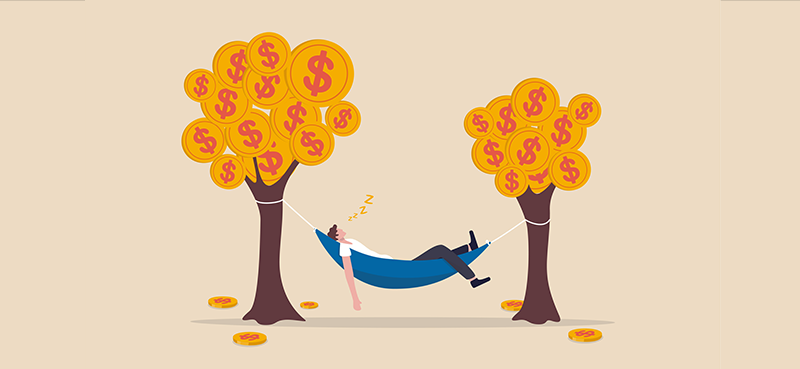Many assets lose value over time.
A new car depreciates as soon as it leaves a dealer’s lot. And as a rule of thumb, a car loses 15–20% of its value annually… until, at some point, it’s worth nothing.
Similarly, an option contract loses value over time. This phenomenon, called “time decay,” needs to be considered in most option strategies…
That’s because option contracts have a pre-set expiration date. All else equal, the time component of the option price will decline… all the way to zero at expiration.
One popular type of option trade—“covered calls”—gives us a way to profit as an option’s value sinks.
Today, we’ll explain the basics of this strategy… and highlight the market scenarios where covered calls are a great way to generate additional income.
Covered calls
In a nutshell, selling covered calls, also known as “buy-write,” involves two steps: buying (or owning) a security and selling (“writing”) call options against it.
Here’s how it works…
There are two sides to every option contract. Buying a call option gives you the right, but not the obligation, to purchase a stock at a predetermined price (the “strike” price) by a certain date (the expiration date).
Conversely, when you sell a call option, you take on the obligation to sell a stock to the call owner at the strike price by the expiration date. This is why, if you sell a covered call against your existing position, you must have the shares to deliver if the option is called. (“Covered” in the covered call strategy means you already own the shares.)
And remember: One option contract controls 100 shares.
On the expiration date, only two scenarios are possible:
- The price of the underlying stock is below the strike price. In this case, the call option contract is worth zero.
- The price of the underlying stock is above the strike price. In this case, the call option is worth the difference between the stock price and the strike price.
As a covered call seller, you want door number one.
As long as the stock is trading below the strike price, the call you sold against your position will expire worthless. You get to keep the premium (which you collected upfront when you sold the call). And you’ll also keep your shares (which you won’t need to deliver to the option buyer).
In this scenario, you profit from time decay. You collect the option premium while keeping your stock position.
Example
Let’s say you own 100 shares of ACME, which is trading around $200 per share. You notice that you can sell a call option with a strike of $210 that expires in a month for $0.75. You decide to sell one contract, generating $75 on your 100 shares.
Our two scenarios:
- At expiration, ACME is trading below $210 (below the strike price). You get to keep the $75 premium you’ve collected upfront… and your 100 shares of ACME, too. In other words, you’ve made an extra $75 without any change to your original position. And you can repeat the process if you like.
- ACME is trading above $210. In this case, you’ll sell your 100 shares at the strike price of $210—regardless of the current stock price… and keep the $75 premium. Your gains on ACME are capped… but you’re not losing money on this trade either.
The ideal stock action for a covered call trade would be for ACME to trade sideways, decline slightly, or move moderately higher. As long as ACME doesn’t rise above the $210 strike price at expiration, you’ll get to keep the premium and your shares.
In fact, even a sharp decline in ACME is OK—as long as you don’t plan to sell the stock. You get to keep the premium in either case… which could help weather the decline.
When to use the strategy
Covered call strategies are great for stocks with limited upside… especially if you plan to hold them forever.
You might have accumulated a bunch of utilities or telecoms over the years (or similar high-income, slow-growth stocks). When you think the near-term upside is limited (but don’t mind selling if the stock rallies), selling calls on your shares is an easy way to juice your returns over time.
Ideally, you’ll get to generate extra income from the same positions over and over again.
And if the shares are called away, you can always buy more when the stock declines.
Covered calls are a great strategy for a flat or meandering market… if you’re only moderately bullish on the market or a stock… or expect a slightly declining market.
It’s also worth noting that high volatility can boost your gains from selling calls, since the risk involved pushes option prices higher—and many call sellers continuously scour the market for promising opportunities.
In sum, with covered calls, you trade some of a stock’s potential upside for current income. It’s a conservative strategy that can boost your income… provide some downside protection for your portfolio… and can be especially valuable when the market’s (or stock’s) upside is limited.





















